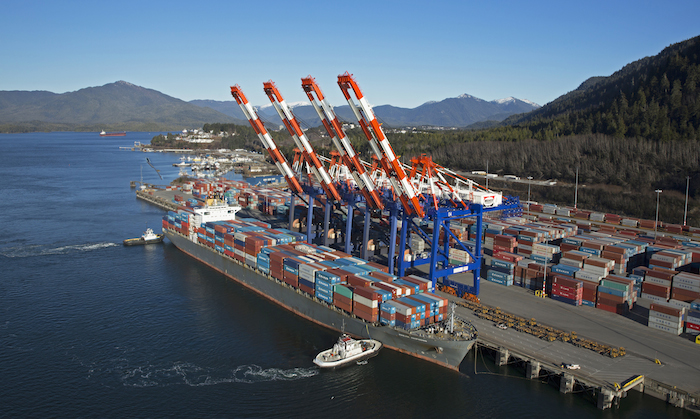Mexico hardens Manzanillo Port cyber perimeter
Mexico signs Manzanillo cyber contract; with MXN=X stable and MBONO yields below 8.7%, enhanced defenses should support ^MXX performance and logistics FDI as BZ=F anchors external pricing.

Mexico’s signing of a cybersecurity contract for the Port of Manzanillo on 23 October 2025 marks a substantive enhancement to operational resilience at the country’s leading Pacific logistics gateway. This move shifts cyber defence from a narrow technical function to a macro-level instrument supporting economic continuity in a trade-dependent system. With nominal GDP projected at USD 1.81 trillion in 2025 and goods trade nearly matching output, operational disruptions at major ports directly affect growth, fiscal performance, and FX flows. Manzanillo processed approximately 3.9 million TEU in 2024—accounting for about 40% of Mexico’s Pacific container traffic and connecting Asia-Pacific supply with USMCA-linked manufacturing corridors. As a result, a robust cybersecurity perimeter is now embedded in Mexico’s sovereign risk framework.
The contract, managed by the Navy, mandates real-time network monitoring, vulnerability testing, and rapid-response coverage for a full year from November 2025. This embeds digital risk controls across customs, billing, and cargo-tracking systems that process more than USD 70 billion in goods each year. A single percentage-point reduction in potential port downtime preserves roughly USD 1.1 billion in annualised trade value. The effect is direct—more stable customs operations protect VAT and tariff receipts while reducing logistical bottlenecks that inflate working-capital and insurance costs for shippers and terminal operators.
Macro indicators align with the policy shift. Headline inflation stood at 4.4% year-on-year in September 2025, within Banxico’s 3% ±1% target range, while USD/MXN (MXN=X) averaged 18.15 over 22–23 October. Ten-year MBONO yields held around 8.85%, and five-year sovereign CDS spreads stabilised near 88 basis points, outperforming most regional comparators. By formalising cyber protocols at its most strategic port, Mexico narrows operational risk that is factored into sovereign spreads and logistics-linked equities. Robust digital controls reinforce the feedback loop between infrastructure security, export receipts, and fiscal flows—supporting Banxico’s disinflation process and improving debt-servicing ratios.
Three primary channels transmit the effect. First, predictable port operations secure the cadence of export receipts and FX supply, dampening MXN volatility and supporting liquidity management. Second, reduced trade-credit spreads lower corporate borrowing costs and ease crowding-out in the domestic banking sector. Third, stronger compliance in digital infrastructure lifts Mexico’s rating in global supply-chain risk indices, lowering the cost of capital for logistics and manufacturing projects and supporting nearshoring flows. Foreign direct investment in transport and warehousing reached USD 4.7 billion in 2024, with the authorities targeting a further rise as reliability becomes a core differentiator for supply-chain allocation.
External conditions reinforce the initiative’s timing. Brent (BZ=F) traded near USD 87 per barrel in mid-October, maintaining stable input costs for Mexico’s export engine. The security upgrade ensures that positive external pricing efficiently transmits into local production and export rather than being eroded by port disruptions. With port-related cyber incidents up 35% globally since 2022, Mexico’s anticipatory investment moves ahead of peers and strengthens Manzanillo’s position as a hub for Asia and US-bound flows. Comparative analysis with Brazil’s Santos and Chile’s Valparaíso highlights the competitive advantage of pre-emptive risk management in the regional logistics landscape.
Capital markets reflect growing institutional confidence. The IPC (^MXX) posted a 6.8% gain year-to-date through 22 October, while the peso remains a rare emerging-market currency with positive real yields. Sustained cyber-incident containment would likely push five-year CDS closer to the 80 basis-point threshold and support ten-year MBONO yields below 8.7% by mid-2026, assuming inflation expectations remain anchored. Progressively, each verified period of operational stability reduces volatility, supports portfolio reweighting, and enhances Mexico’s case as a lower-governance-risk EM exposure.
Three benchmarks will test the reform’s impact. By December 2026, zero major cyber incidents should disrupt Manzanillo for more than 24 hours; logistics FDI should rise at least 15% year-on-year by Q4 2026; and MBONO-10 yields should remain below 8.7% provided CPI is within target for four straight months. Meeting these marks will confirm that cyber investment compresses sovereign risk, supports trade continuity, and bolsters FX stability. Manzanillo’s digital upgrade thus institutionalises cyber resilience as infrastructure for Mexico’s export-driven growth model.





